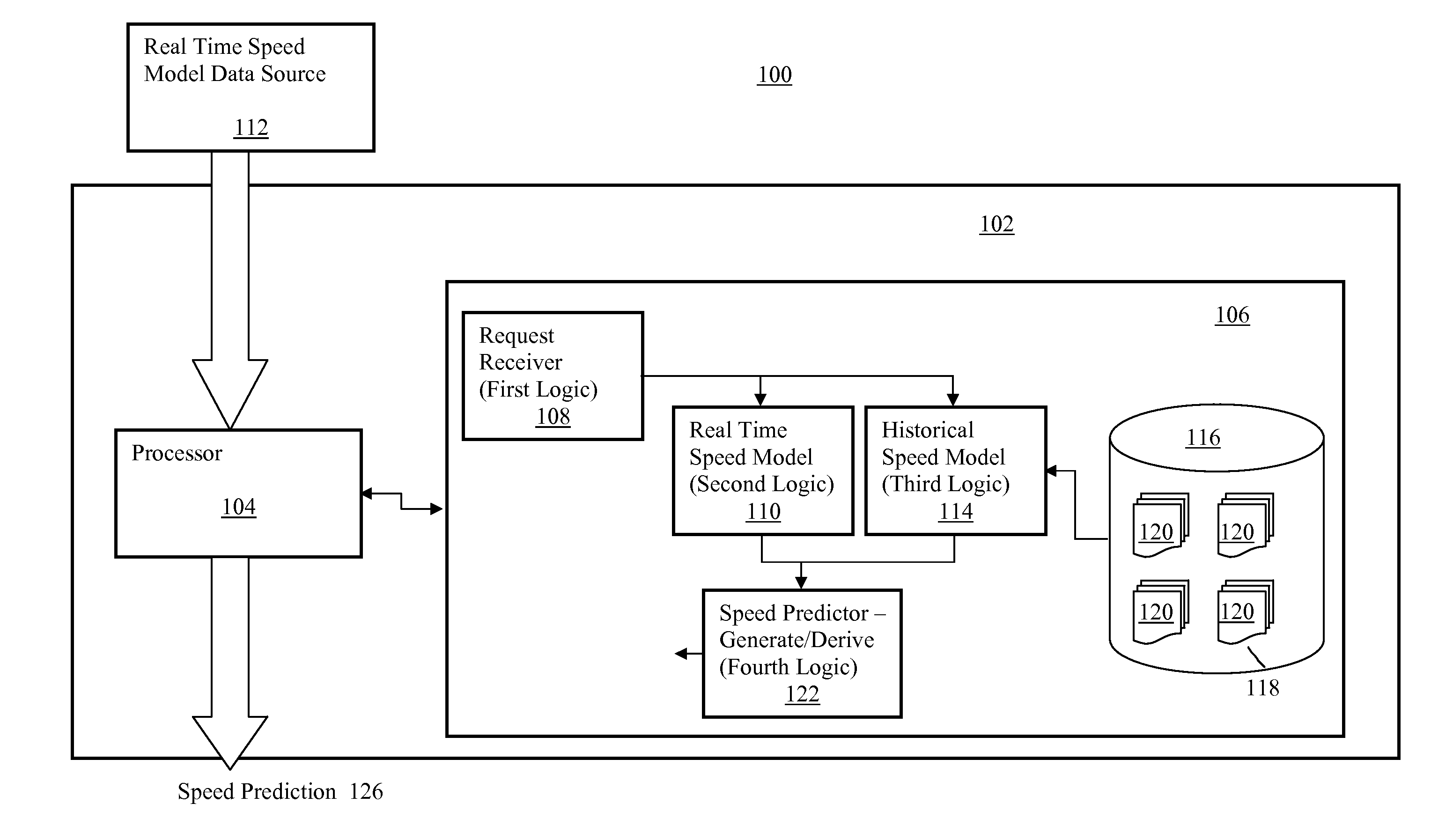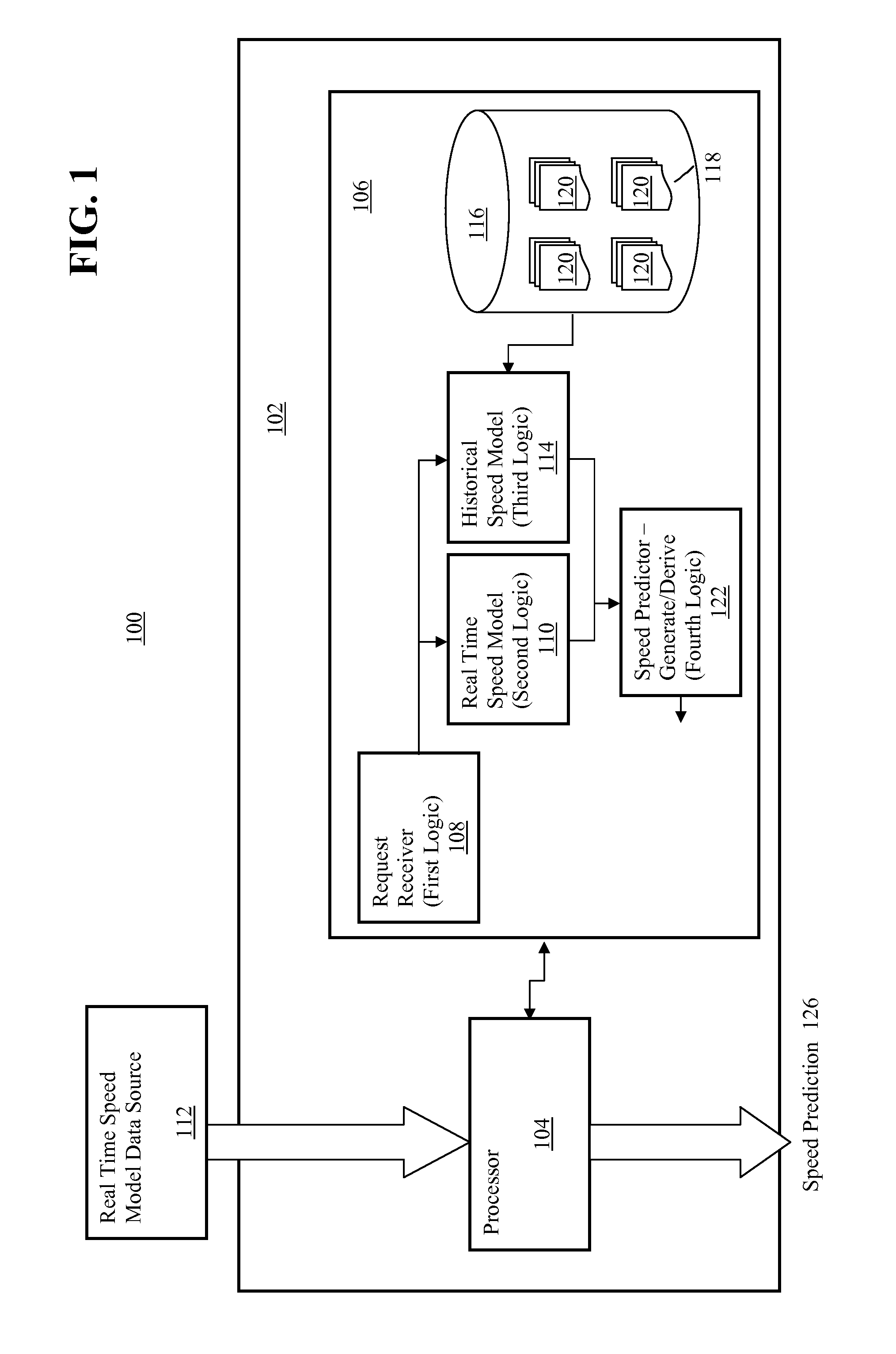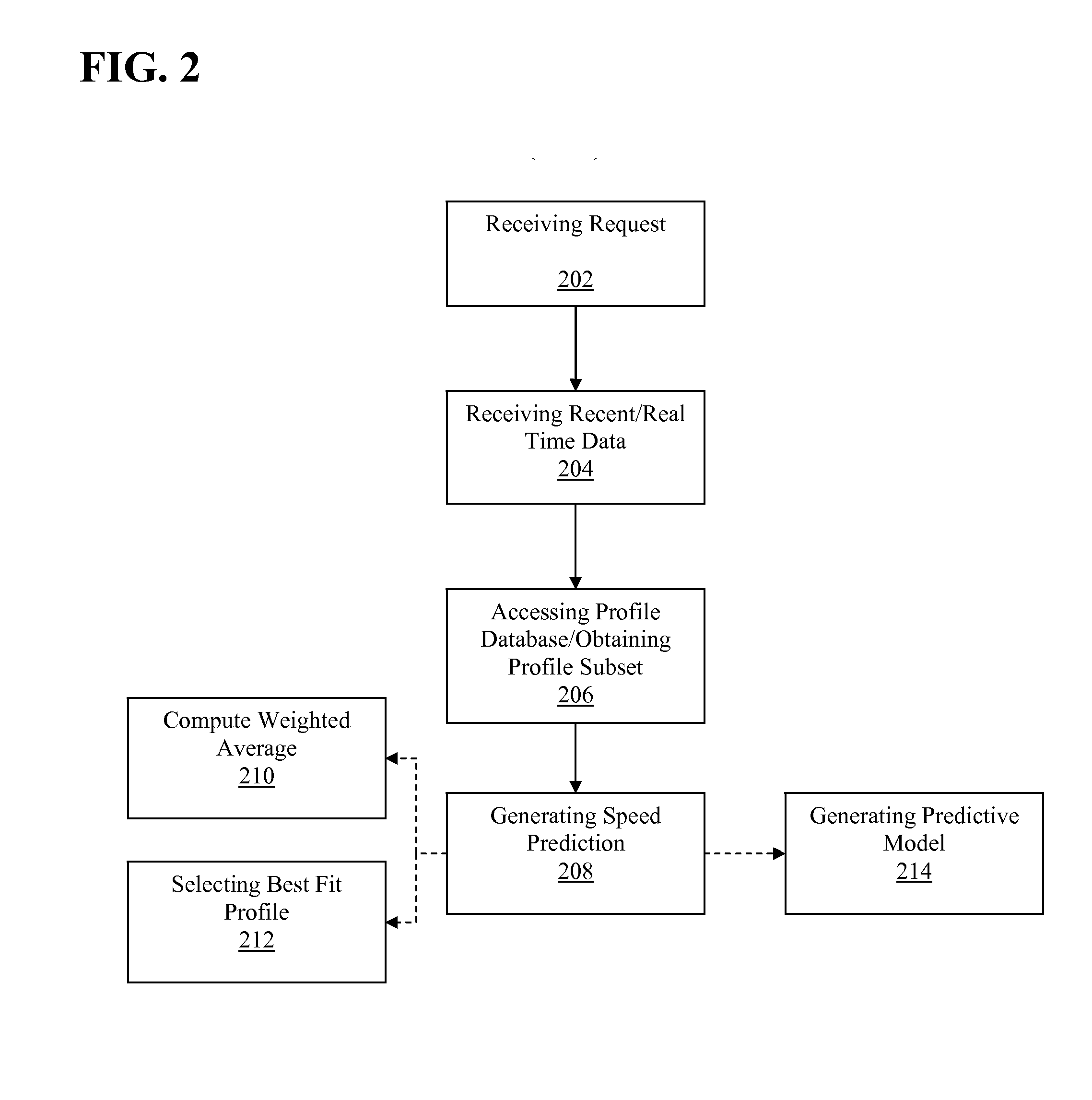Adaptive Traffic Dynamics Prediction
a traffic dynamics and prediction technology, applied in the detection of traffic movement, traffic control systems, instruments, etc., can solve the problems of inability to adapt to the changes in traffic dynamics, varies geospatially and can be sparse, and the penetration of probe data is difficul
- Summary
- Abstract
- Description
- Claims
- Application Information
AI Technical Summary
Benefits of technology
Problems solved by technology
Method used
Image
Examples
Embodiment Construction
[0017]The disclosed embodiments relate to prediction of traffic dynamics. A descriptive model is provided that uses historical probe data to create “tidal-like” patterns for the usual dynamics on the road network and creates a framework for taking a future time, e.g. in terms of month, day, time, and suggesting a typical speed for the specified road network link at that specific time. With this model, better predictions for estimated time of arrival will be derived. As opposed to blindly extrapolating from a static model, the disclosed embodiments dynamically adapt to current conditions using real time data to adapt, based on current conditions, the model from which a predicted speed may be determined.
[0018]In one embodiment, historical speed profiles are built for the road network by clustering historical patterns into, for example, 2 day or 7 day models. These models may be built using k-means clustering, a method of vector quantization which aims to partition n observations into ...
PUM
 Login to View More
Login to View More Abstract
Description
Claims
Application Information
 Login to View More
Login to View More - R&D
- Intellectual Property
- Life Sciences
- Materials
- Tech Scout
- Unparalleled Data Quality
- Higher Quality Content
- 60% Fewer Hallucinations
Browse by: Latest US Patents, China's latest patents, Technical Efficacy Thesaurus, Application Domain, Technology Topic, Popular Technical Reports.
© 2025 PatSnap. All rights reserved.Legal|Privacy policy|Modern Slavery Act Transparency Statement|Sitemap|About US| Contact US: help@patsnap.com



